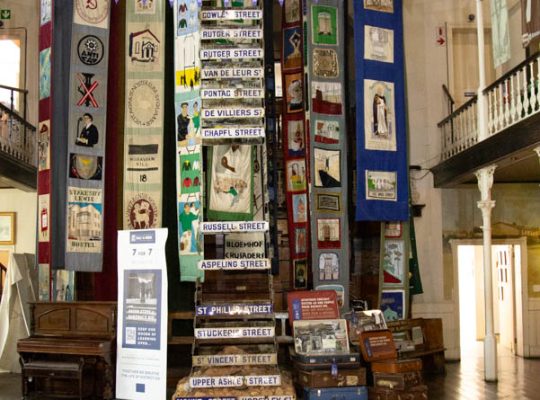
I am frequently placed in situations where I have to explain the work that I do. More than that, I have to explain why I feel my work is important and relevant to those who choose to engage with it. I thought it might be interesting to share some information on that topic here in my blog.
I am fortunate that my work enables me to work both within the disabled community and beyond it, with people who are not disabled.
My overall mission is to remove the barriers that are placed between the disabled and non-disabled communities. Those barriers may be physical, attitudinal, or informational. Using the platforms at my disposal I talk about the various tools and techniques that makes it possible for people from the disabled community to engage with all facets of life, both personal and professional.
With the non-disabled community I hope to break down stereotypes and prevent the stigmatisation of disability. By increasing awareness of how we do the things we do as disabled people, I hope to show that using different, or adaptive, techniques is only different, not inferior to the techniques used by people without disabilities. As an example, I cannot tell you how often people believe that using a screen reader on my laptop and smart phone, is somehow less effective than the way they use their digital device. My response? I can accomplish everything that you do. So why should you consider my way of doing things as being somehow inferior to the way that you do it? My technique is not inferior, it is only different.
Within the disabled community I hope to demonstrate that what is possible for us is so much more than we are led to believe. Through sharing my own and other people’s stories, I aim to show what is possible provided we have the correct tools, training and opportunities. By talking openly about our experiences, I want to inspire others with disabilities to reach for more and achieve their dreams.
As a speaker I share my own experiences using storytelling to raise awareness of what is possible. During my presentations I encourage people to ask the questions they may have about disability but are uncomfortable asking. This helps people become less anxious about engaging with people with disabilities whether they encounter them in a social community or work environment.
As a podcaster I invite my guests to share their own stories of either living with a disability or providing products or services for the disabled community. The podcast, which also airs on YouTube, helps to raise awareness and break down the stigma that having a disability means you are in any way limited in what you can achieve.
As a writer, both in my books and my Beyond Sight blog, I share my story and insights, explaining the tools and techniques I use to engage with my world as a blind person, and sharing some of the fun experiences I’ve had since losing my sight. I try to write in a light, conversational style and one of the highest compliments I’ve been paid is that reading my books is much like having a chat over a cup of coffee.
My social media accounts give me the opportunity to share not only my own content but also posts, blogs, and podcast interviews whose message is similar to my own. There is such a wealth of information being shared and I believe it is important to bring those resources to my network as well. I am most often on Facebook or LinkedIn where I can be found under my own name.
At the most basic level, I raise awareness using all the skills and platforms I access, through my speaking, my writing, my podcast, my social media, my workshops. And, by always being open to answering any questions that I am asked. I openly seek for opportunities to demystify disability and foster inclusion. Because, as a person who has been both disabled and non-disabled, I know for sure that there are few, if any, differences between what I could achieve when I was sighted and what I can do now.
To find out more about what I offer, hop onto my website at loisstrachan.com


